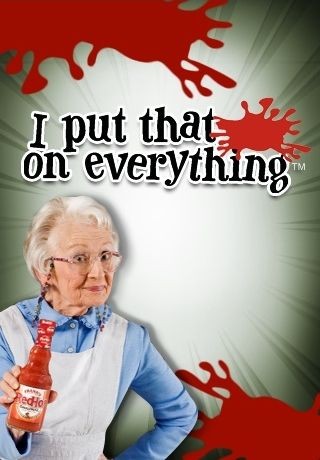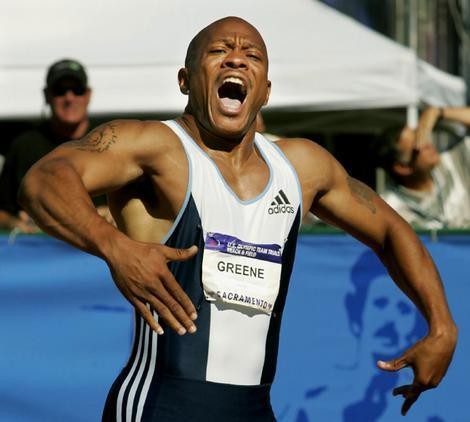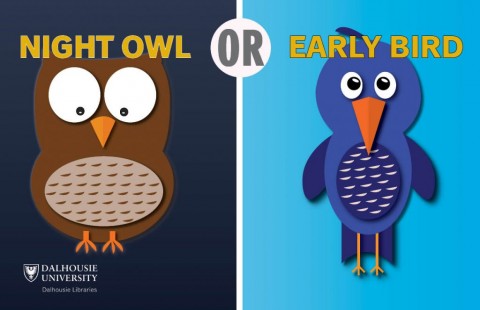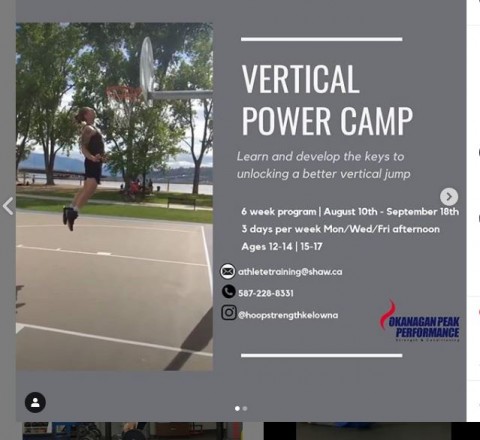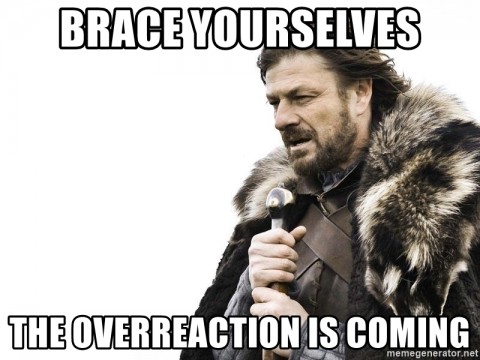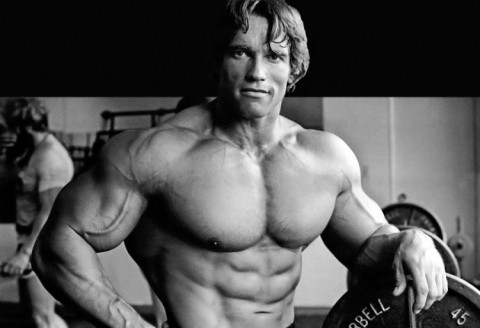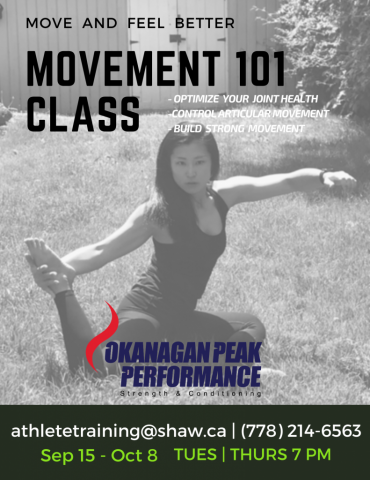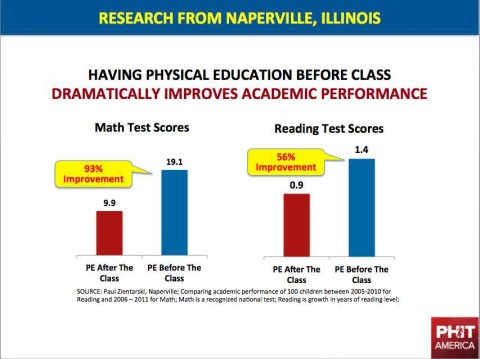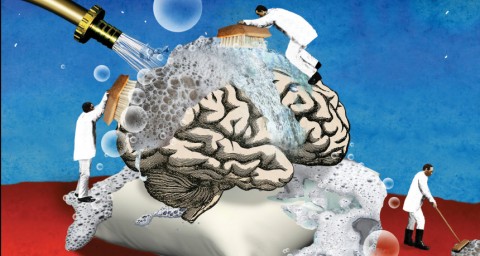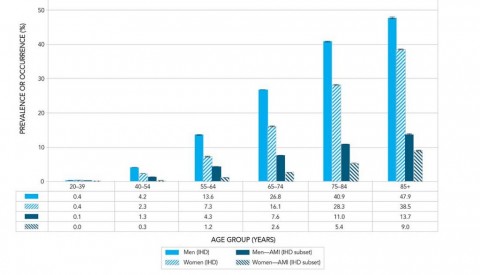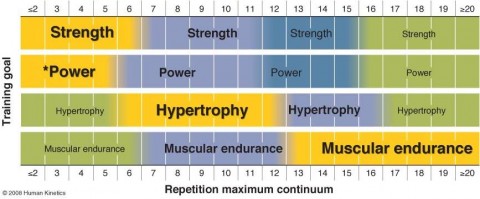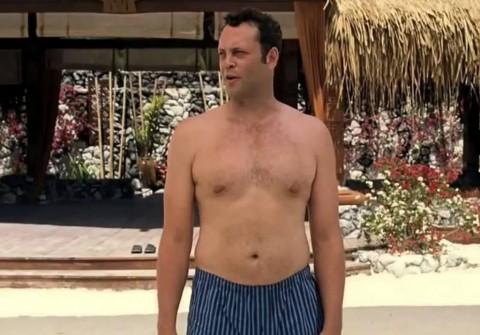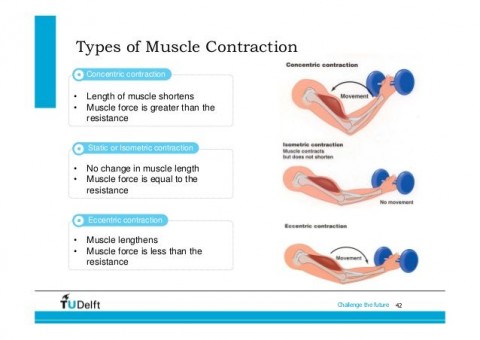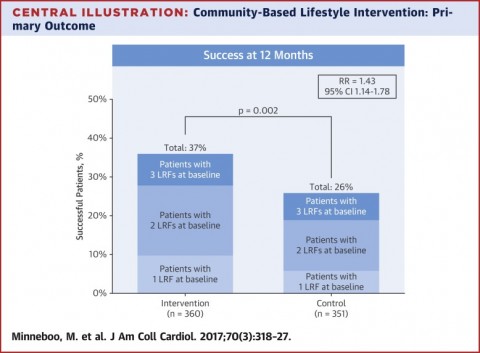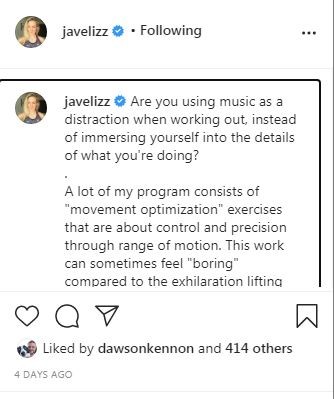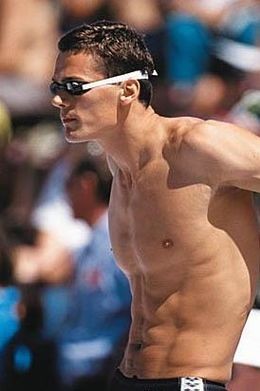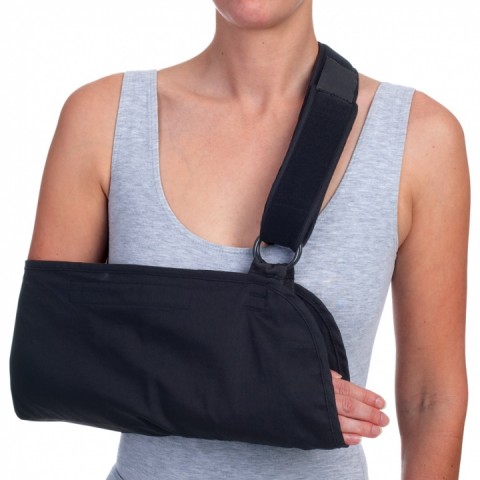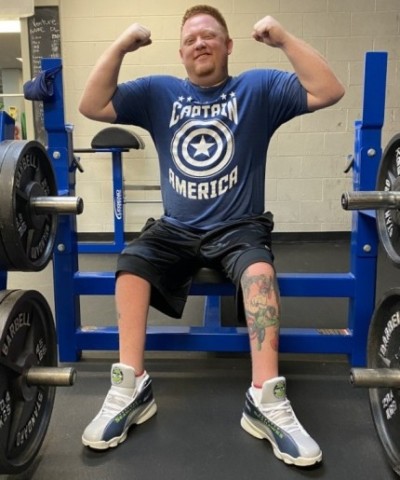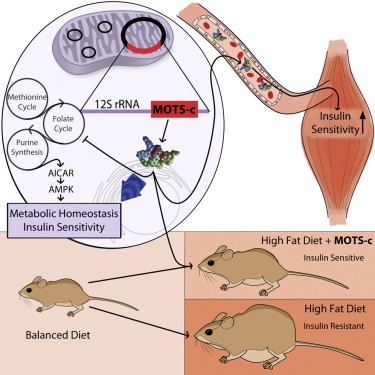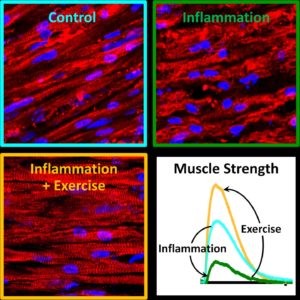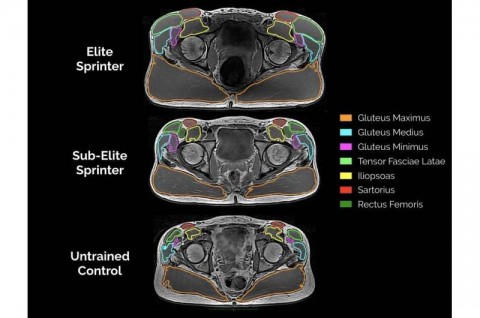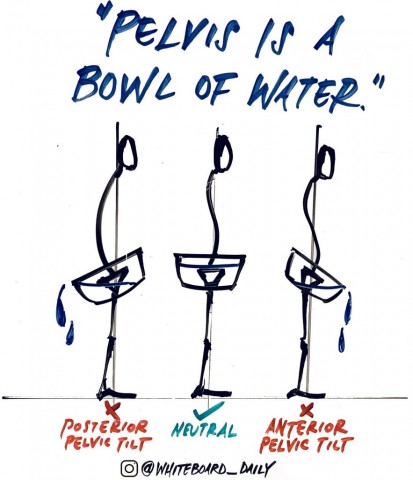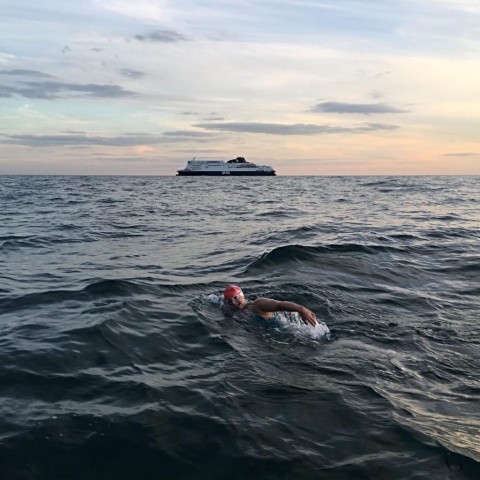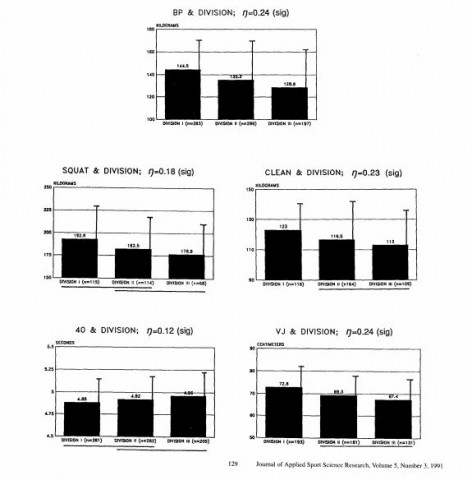Let me start by saying this, I love training older populations. Why? For a number of reasons. I can always learn something eachsession and gain valuable life information.The effects on quality of life asa result from resistance training can be dramatic. The ladder is why I coach. Coaching provides me the vehicle to affectpositive change and impact for a high number of individuals. From a career standpoint there is nothingbetter than to see the impact on quality of life, from evidence basedresistance training, on my olderclientele. Recently I have read two solid research studieson how older populations respond to resistance training and I thought I wouldsummarize and share what I have learned so you can better understand how strongof an impact resistance training can have for you as you age. Paper # 1 Purpose The authors of this paperwere looking to see the prevalence of unresponsiveness in older men and womento create more lean muscle mass, muscle fibre size, strength, and physicalfunction following a resistance training program. Who was in this study? Participants included healthy older men and womenwho were greater than 65 years old. Theparticipants had to be considered healthy and independent. They also had tohave no history of structured exercise training for at least 5 years. What did the resistance training program look like? Participants took part in a 12 and 24 week training program. 110 individuals took part in the 12 week program while 85 of those people continued into the 24 week program. The program consisted of 3 supervised training days a week that were supervised by professionals. This program started with higher volume (reps and sets) and less intensity (how much weight you're lifting as a percent of your 1 rep max for a given exercise), and progressed toward lower volumes and higher intensities as the...
9 Reasons Swimmers Should Train Differently During COVID-19
- Chris Collins
- Fitness
- Training
- 1736 Hits
- 0 Comments
-
The coronavirus has resulted in sports teams and leagues being cancelled until safe to resume. With athletes not practicing or competing with their teams, not to mention schooling from home, this has resulted in a lot of free time for athletes. Many are looking to use this downtime to fill their schedules and establish a routine. A great way to do this is with strength and conditioning sessions. There's only one problem... Swimming is not like any other sports. And they need to train differently during this pandemic than soccer, basketball, hockey or football players. Below are 9 Reasons Swimmers Should Training Differently During COVID-19. #1 - All Volume Is Not Created Equal - Do you know any swimmers? I don't mean recreational swimmers or even triathletes for that matter. I mean school-age kids that swim year-round with a club. If not, would you believe they can spend between 15-20 hours per week training in the pool? This includes five evenings per week for 2 hours each plus anywhere from 3-6 days week in the morning as well. Basically this is a ton of volume. To put this in perspective consider that the 200 m in track & field and the 50 m free in swimming will both take about 20 s. Usain Bolt holds the men's world record at 19.30 and it's 20.91 for the 50 m free held by Cesar Cielo. So swimming the same amount of time as sprinting covers 1/4 of the distance i.e. 50 m versus 200 m. There is no way a runner would ever expect to train the same volume with running that a swimmer does in the pool. For example, if a swimmer put in 75 km of volume in a week (very high) the equivalent volume would 300 km for a runner...
Improved Fitness Helps with Motor Learning
- Chris Collins
- Fitness
- 1855 Hits
- 0 Comments
-
Exercise really is one of the best things you can do in your life. It's kind of like the Frank's RedHot sauce of condiments. Remember their tagline? Just like Frank's RedHot, exercise does it all as well. Or if you're more of a movie buff than a chef maybe Windex is a better example. Just like Windex, exercise can solve many of life's problems. Because we're aware of many of the benefits of exercise including increased/improved: strengthfitnessmobilityhealthsleepmental healthpostureimmune functionlongevitybone & joint healthenergy weight managementacademic performance And this is really preaching to the choir because as a reader of this blog, and possibly subscriber of our newsletter, you already live an active life for the reasons listed above. But did you consider one of your reasons for increased fitness to be so that you would have improved motor skills? In other words, is there a physical task you were looking to improve and thought the way you would get better would be by increasing your fitness? If you hadn't thought that way don't worry you're not alone, read this blog for tips to staying fit and healthy.. Not many people had. And new research published this months is among the first evidence to show this. The study looked at how running fitness improved motor learning. More specifically the researchers wanted to know what was the mechanism that allowed for better movement. Here's what they did. The had mice run daily on a wheel for a week. And then they measured how the mice on the time to cross a balance beam and their performance on a rotarod measuring speed when they fell off. Below are the results comparing the the mice that ran versus the controls that didn't. e Time to cross a 1-m long, 4-mm diameter rod balance beam during each trial...
Newly Diabetic? Reduce Calories and Exercise
- Chris Collins
- Fitness
- 1536 Hits
- 0 Comments
-
Quick question for you... What was type 2 diabetes once referred to as? If you said 'adult-onset' give yourself a gold star. Those familiar with this disease understand type 2 diabetes was the kind you were born with and type 2 was the form that developed later in life i.e. hence the adult part of the name. Bu type II isn't limited to adults. We've seen children as young as three years old with type 2 diabetes. A new study finds that not only does nutrition and exercise help with managing, or even reversing, diabetes but it also appears the benefits are greater when started at an earlier age. The 12 month study included 147 participants which were split as 70 in the intervention group and 77 in the control group. The control group followed standard care for type 2 diabetes. The intervention group included an exercise and nutritional component. For 12 weeks subjects followed a low calorie approach known as the Cambridge Weight Plan. This daily caloric intake on this plan is quite low at 600-1500 cal per day. After the 12 weeks the intervention group were put on a healthy eating plan. As for the exercise component, the intervention group was required to do 150 minutes of exercise per week. This works out to 30 minutes of exercise on each week day with weekends off. As well, subjects in this group were required to take 10,000 steps per day. A couple of features of the participants of this study was that they were young (between 18-50 years with an average age of 42 years) and all subjects were recently diagnosed within the last three years. So what did they find? The intervention group lost 12 kg (26.4 lbs) versus 4 kg (8.8 lbs) for the control group. This is...
High 5 for Better Performance
- Chris Collins
- Fitness
- 1694 Hits
- 0 Comments
-
I always find it interesting the different pre-game/race rituals of the various athletes we work with. Some are very quiet and keep to themselves before competition. There is not a lot of talk or action. They may be bundled up in layers to stay warm with buds in their ears to block out distractions. And then there are those that can't wait to be let loose. They are bouncing around, loud and may even be a little bit obnoxious. American sprinter Maurice Green comes to mind when I think of this type of athlete. American sprinter Maurice Greene. We all can probably identify with one type or the other. For me, I always preferred to be quiet, calm and at rest before a race. I would go over the race in my head and visualize what a good race would look like, how it would feel and what I wanted to do to ensure success. So what is the goal? The graph below, the Yerkes-Dodson of Arousal and Performance, explains this well. On this graph the x-axis (horizontal) shows the level of emotional arousal from low on the left side and high on the right side. The y-axis (vertical) depicts performance with low at the bottom and high at the top. For maximum performance we should seek a medium level of emotional arousal. In the past, we've heard that we need to 'put on our game face' in order to perform. And for some that appear a little sleepy or lazy this may be the case. But for those are already 'amped' up we may not need more stimulation. You may have seen instances where athletes use smelling salts prior to competition. This would be when an athlete 'feels' they are the left side of the graph, and thus below optimal...
Asthma, Allergies and Poor Sleep Habits of Teenagers
- Chris Collins
- Fitness
- 1559 Hits
- 0 Comments
-
Last weekend was a busy time in our home. We had a BBQ dinner to celebrate my dad's birthday. It was our 11th wedding anniversary. And we got a new puppy. The puppy is a 9 week old labradoodle and sure is cute. She did really well during her first day and made it through most of the night. It wasn't until 4 am when she started whimpering a little bit. This was only 30 minutes before I normally wake up but it sure felt early. And combined with how busy the previous weekend was it caught up to me quickly. Tonight I'll be looking to get to bed early and get things back on track. And a study I recently came across reminded me of the value of sleep. The 2018 study looked at almost 1700 teenagers of 13-14 years living in India and the connection of sleep to allergies and asthma. They asked the teens if they had any respiratory problems or difficulty breathing as well as if they had any nasal allergies such as runny nose or coughing. Along with this they also asked the teens what time they felt tired at night, when they woke up and if they felt tired in the morning. Knowing this they could assign the teens a chronotype such as "morning type", "evening type" or an "intermediate type". Sleeping 10 pm - 6 pm is not the same as 1 am - 9 am. Aim to be an early bird for better health. What they found is that evening types were 3 times more likely to develop asthma and 2 times as likely to develop a nasal allergy. These results are even more interesting as the researchers took into account where the teens lived and which ones had smokers or pets in...
Zinc to Help Prevent COVID
- Chris Collins
- Fitness
- 1902 Hits
- 0 Comments
-
So Kelowna got hit with a number of COVID cases in the past week. And while many of the cases seemed to be tied to a younger crowd partying downtown, this serves as a good reminder to the rest of us that we're not out of the woods. We still need to wash our hands, disinfectant surfaces, maintain social distancing and self isolate if we're under the weather or travel. As well, exercise can be one of the best things we can do to keep our immune system strong. And we can't forget the benefits nutrition can play in keeping us healthy. One nutrient in particular that may help is zinc. Sources of Zinc Zinc is an essential nutrient meaning we need to get it in the diet as our bodies cannot produce it. Red meat, chicken and shell fish will be our best sources of this nutrient but we also get it from baked beans, chick peas and nuts. Fortified cereals commonly tout being a source of zinc but this should be considered a last option compared to the other whole, fresh food options listed above. Why Vegans & Vegetarians May Need More Zinc Vegans and vegetarians should be more aware of their zinc intake for a couple of reasons. The first is the primary sources are from animal products. Secondly vegetables and grains containing phytates which will reduce the absorption of zinc. So it is even more imperative for vegans and vegetarians to meet the minimum daily amounts listed below. How Much Zinc Do We Need? In terms of how much zinc we should get, women should aim for 8 milligrams (mg) and men 11 mg per day. Deficiencies may lead to delayed growth in children, an increased risk of infection and possibly pneumonia. It is estimated that approximately...
Enjoy Picking Up Poo
- Chris Collins
- Fitness
- 2000 Hits
- 0 Comments
-
So we got a dog. And it wasn't a decision we took lightly or came to quickly. We've been considering this for a number of years, even before we had kids. In fact, when Olivia was 3 she was asked if she thought she'd be getting a dog. She's 7 now by the way. Sorry to all other dog owners out therebut Poppy is the cutest puppy in the world. Anyways, she thought about this for a second and then gave a great answer. She said "she'd have to get a new family first". That comment has haunted me ever since. Nobody wants to be the bad dad. But we do enjoy to travel. And we head up to the hill in the winter. And I couldn't see how we could continue our current lifestyle with a dog in the mix. And to be honest I'll still don't. To give you an example of how 'on the fence' I was about getting a dog, we told the girls we were going to babysit the dog for a few nights. And so the dog would have a few nights sleepover with us. This would allow Alexandra and I the chance to evaluate how everyone was adapting to this new member of our family. And how this little puppy was adapting to us. Because let's be honest, a new puppy can be a lot of work. And if we realized we weren't up for the challenge or we'd bitten off more than we could chew than we still had the option to take the dog and the girls would still be over the moon about having a dog stay with us for a few nights. Win-win, right? Plus, since we decided to keep the puppy you should have seen the girls faces and...
Kids Can't Jump
- Chris Collins
- Fitness
- 2030 Hits
- 0 Comments
-
Full disclosure...I'm not a very good leaper. I was a swimmer for most of my athletic career. I also played a little basketball and volleyball. And while jumping is a key aspect of most sports it wasn't my forte. Even later in training I was never the best at box jumps. I remember a friend, Chris Lebihan, coming in to the gym one day to train. And the plyo boxes were stacked totalling 54" tall or 4 feet 6 inches. Anyways, a number of young athletes were training. And one of them commented that jumping that high just wasn't possible. Lebs had just walked in the gym in street clothes with his gym bag slung over his shoulder. I called to him and asked him to jump up on the boxes. He dropped his bag off his shoulder and proceeded to jump atop the boxes with ease. He picked up his bag and carried on to the change-room. The young athletes were stunned and speechless. Now to be fair it didn't hurt that Lebs was an Olympic medallist in a power sport i.e. bobsleigh. And it definitely made a huge impact on those young athletes. So besides impressing people in the gym what else is jumping good for? Well, it's an important quality in many team sports. The striker in soccer may need to get up on a corner to head the ball in for a goal. In football, a receiver may need to out jump the defense on a last play Hail Mary. Basketball and volleyball involve constant jumping on every play from a lay up, a dunk or a rebound in the former to a serve, a hit or a block in the latter. When you think about it the highlight plays of most sports involve jumping. This could...
Animal Protein Better for Grip Strength and Functional Status
- Chris Collins
- Fitness
- Nutrition Advice
- 1574 Hits
- 1 Comment
-
We just got back from a few days camping at the lake. And it was great to not set an alarm, to go boating, kayaking, swimming with the kids and to end each day around the campfire. And when we're camping we relax our nutritional choices a little bit to include a cold beer, a smore around the camp fire and other snacks during the day. When you're camping with a group you tend to do things by committee. One group will look after making the meals. Another may handle cleaning up and doing the dishes. When it was my turn in the kitchen I prepared meals with a definite omnivore influence. We made sure to include lots of fruits, vegetables and salads at each meal. But this was to accompany bacon and eggs, steaks, chicken tacos and turkey sandwiches. For a while there the was a real push back against including meat in the diet. We saw a number of people wanting to become 'game changers' and drop meat from their diets. Restaurants were dropping meat or at least adding meatless alternatives to their menus. And overall it seemed as though you had to whisper when you talked about having a steak for dinner on the weekend. Well, with everything in life it seems like when we learn something new we go overboard and over-react in the short term, and maybe under react in the long term. Eating more fruits and vegetables would be an appropriate reaction. Eliminating all meat in favour of processed meatless alternatives would be an over-reaction. A new study helps bring the pendulum back into balance. In this one researchers looked at the difference plant versus animal protein had on grip strength and functional status. Almost 1900 subjects were involved in this study which ran for...
Early Worms Get 6 Packs
- Chris Collins
- Fitness
- 1563 Hits
- 0 Comments
-
Back in high school I was a night owl. When exam time came around I would buy a six pack of Coke and and study through the night as I crushed cans of soda. This trend continued through my university days. I remember my first year of university in Ohio and studying for a botany test with Dr. Dickinson. A few of us got together to pull an all-nighter. Someone brought a package of chocolate covered coffee beans and we snacked on these and quizzed each other on the Latin name for oak and the various organelles of the plant cell. Schwarzenegger was known as the Austrian Oak. The genus for oak is quercus. So Schwarzenegger would be the Austrian Quercus. Yes, this is how I studied. Knowing what I know now I would have done things differently. What would I have changed? Well for starters I wouldn't have pulled all-nighters. I would have spent more time preparing earlier rather than leaving it all to the night before. Grades are important but health is more important. Plus at a certain point I'm sure there is the potential for diminishing returns when sacrificing sleep in order to try and learn the content from one more chapter. What I should have done would have been to get a good night's sleep and exercise before the exam. Dr. Ratey does a great job in his book Spark of explaining the benefits of exercise on the brain especially when it comes to cognitive function like taking an exam. And hopefully this routine of getting better sleep, waking up early and exercising before work or school would have carried on through life. Because there are a variety of chronotypes. Some of us are early birds, others are night owls and the rest fall somewhere in between....
Welcome to OPP Ayumi
- Chris Collins
- Fitness
- 1608 Hits
- 0 Comments
-
Many of our clients have had the chance to meet and maybe work with Ayumi. Even if you have, below are a few more details on this new addition to our OPP team. My name is Ayumi and I'm a certified personal trainer and movement coach. After years of working in an office, I decided to leave my desk job and pursue a career in the fitness field. I grew up playing basketball and have always been an active person. Due to my background in sport, it was very natural to become a fitness trainer. My purpose is to help people to become the healthiest and happiest version of themselves. I want to have a positive impact to everyone that I meet in my life. I’ve been focusing on studying biomechanics for last few years. I specialize in movement coaching and incorporate mobility workout with strength training. This approach helps my clients move better and get a more effective workout. I help people that want to gain adequate mobility to archive their specific fitness goals, or want to move better / pain free in everyday life. When you don’t see me in the gym, you would find me hiking with the latest buy bulk ammo online and my two fur kids, or sunbathing at a beach. I am also big fan of craft beers. One of my favourite things to do on my day off is to ride my bike and do a brewery tour with my friends. If you'd to experience Ayumi's coaching and work on your mobility you should sign up for our Movement 101 Class. This will run Tuesdays and Thursdays at 7 pm starting September 15 for 4 weeks. To register email athletetraining (at) shaw (dot) ca, call (778) 214-6563 or stop in to Okanagan Peak Performance...
The Difference Between Mobility and Flexibility
- Chris Collins
- Fitness
- 1826 Hits
- 0 Comments
-
There are some things in life that get interchanged and used as one and the same. One example that comes to mind is dietitian and nutritionist. A dietitian is the professional designation reserved for those that are accountable to a regulatory college. The same is not required to be a nutritionist. So the term nutritionist can be used by anyone and can be hard to know what is meant when it is used. Another example of terms that get mixed up can flexibility and mobility. While they are related they are not the same. An article by Eric Cressey and Toby Brooks does a great job of distinguishing between the two. The table below highlights some of the key differences between mobility and flexibility. Flexibility is typically something we consider in a clinical setting. For example, you might be on a table at the physiotherapist and they check the flexibility of your hamstrings. Compare this to our mobility which we would tend to look at when loaded, such as when we are standing. A coach might look at whether an athlete can touch their toes or what their hinge looks like. With flexibility adding strength or power to the mix has a detrimental effect. Imagine performing a stretch but doing so with added external force or speed and this may lead to a poor outcome. Mobility however can be improved when we add some resistance to the drill. The swimmers we work with will be familiar with performing some banded shoulder dislocates or banded pull aparts during their warm up. Neuromuscular efficiency refers to having the right muscle fire at the right time and in the right plane. There is a significant neuromuscular influence with respect to mobility training. Flexibility training has minimal neuromuscular influence. When we are working on our...
Training = Brains + Brawn
- Chris Collins
- Fitness
- 1660 Hits
- 0 Comments
-
Back when I was in school there weren't the number of options for classes that there are now. Our schedules included math, science, English, socials, physical education and since this was a Catholic school we also had religion. Later on I taught high school briefly before taking an indefinite leave to focus on being an entrepreneur and growing Okanagan Peak Performance Inc. One thing I noticed that had changed from my days as a student to one as a teacher was the wider selection of courses. As well, there were students diagnosed with learning disabilities and other challenges. There would be CEAs and tutors available to help such students. But what if there was another option available to help students learn? What if there was something that could help the student in the classroom and with their health? Well there is such an option and it's to do exercise before school. A recent review looked at a number of studies to determine the effectiveness of fitness training on memory and learning. The researchers looked at papers over a 10 year period (from 2009 to 2019) that were listed in PubMed. Participants of included studies ranged from 18-35 years. From an initial search of 467 papers, the criteria above reduced this to 13 papers for the review. What they found is that exercise improves memory, learning ability, attention and concentration in young people that exercise for up to an hour. The benefits will last up to two hours and included exercise sessions of two to sixty minutes. The common feature is that the exercise had to be high intensity. With regards to the duration it appears to be more important for cognition and less important for memory. As well, with memory there seems to be some benefit to having a recovery period...
Why Your Brain Needs Sleep
- Chris Collins
- Fitness
- 1794 Hits
- 0 Comments
-
On the weekend I was able to link up with some friends for a pick up game of football. There's a group message for these games. And since the Spring I've had to decline the invites and posts to come out to play. That all changed Saturday when we met up for a game. And it had been a year or so since I'd been out to play. I expected there would be some rust. And I expected to be sore later. Active recovery, nutrition and sleep had to be planned and dialed in if I expected to get through the days that followed. I should add that after the game I stopped in to the gym to test some lifts. So I knew sleep would come easily that evening. But why do we need sleep? And how are my needs for sleep different than that of a baby or a young child? (cue the jokes of being a big baby or acting like a child on occasion...I'll wait) A recent study explains the different needs for sleep at various stages in life. As a baby up until two or three years of age sleep is needed for neural re-organization and learning. This is when our brain is still building and developing and we see the changes almost daily as first steps are taken and first words are spoken. This learning occurs during REM (rapid eye movement) stage sleep and for babies this can account for 50% of sleep. This makes sense when you consider the amount of growth and learning that takes place in the first 24 to 36 months. This is also the reason we let babies sleep as long as they need and don't wake them. When you wake someone deep in REM stage sleep they will be...
What Happens When You Age Without Exercise
- Chris Collins
- Fitness
- 2108 Hits
- 0 Comments
-
Have you ever watched kids play? It's usually unstructured, all out and fun. For example, watch a 3 or 4 year old at a playground and they run from one play structure to the next. They don't walk from the slide to the swing, they run. And it's not to because they are in competition with someone else. There could be no other kids at the park and they'll still run. Puppies are the same way. I've started taking our puppy, Poppy, on some hikes and walks. And every now and again she'll open up into a sprint until she gasses herself and has to stop and rest. Once she recovers she's off again chasing a butterfly, racing me or for any reason at all. At some point in life exercise changes. Maybe it's because we think everything has to be by the rules or it doesn't count. For example, you can't just do push ups you need to do 3 sets of 10. And runs need to be a certain time or distance. Maybe we stop exercising because it doesn't feel like play. We don't get to do the fun things we did as kids. Whatever the reasons for not exercising the consequences of not exercising as we age are very real. A recent article covered this in more detail. Here's a brief recap of what happens to your body if you don't exercise as you age. Sleep Issues - Do you have an elderly parent? Or maybe you work with elderly people. If so, you'd know it's not uncommon for them to have poor quality sleep. This can be due to waking up during the night for the bathroom, to not being able to relax or difficulty getting in a comfortable position. Regardless of the reason, it is rare...
Irresponsible Fitness Info in the Media
- Chris Collins
- Fitness
- 1648 Hits
- 0 Comments
-
How do you know if something is true? It used to be that if something was in print it was true. We would read something in the newspaper for example and trusted it be so. There it was in black and white with the reporter's name attached. This isn't the case anymore. In fact we actually have a term for information, in print or otherwise, that just isn't so. I'm not sure the term 'fake news' existed 5 years prior. But now we're skeptical of any information we hear. Especially when the information doesn't support our politics, religion or belief system. And I guess questioning the information we're given rather than accepting it simply at face-value can be a good thing. For some reason fitness and performance is not held the same standard and scrutiny. Or maybe it is and we simply want to believe there is an easier way, a magic pill or exercise that will unlock all of our untapped potential. If there's one thing I would ask our clients and anyone visiting this site is to question to the information you're given. Check out the references on articles sited. Ask questions of the author if you have the opportunity. And take some to consider if what you're heard is reasonable. The following 3 fitness articles are examples of information you should question and maybe pass on 1. 8 AMRAP Dumbbell CrossFit Workouts to Improve Strength and Stamina CrossFit can be like the class clown back in school. They can be entertaining and you'll look to see the shenanigans they're up to from time to time. But nobody took them seriously. And when it got to the point of doing something potentially dangerous the teacher would put an end to it and regain the focus of the class. Now...
Who Do You Trust?
- Chris Collins
- Fitness
- Fitness Education
- 2297 Hits
- 0 Comments
-
Have you heard this quote before: "If you think education is expensive, try ignorance" - Derek Bok - President Harvard University And so my question to you is what areas of your life do you rely on an expert? For example, I use an accountant and lawyer for a reason. Not only did I not go to school for these disciplines but I also don't have the time to stay current with changes in these fields. So even if I had studied accounting or law in university, what I learned at the time may not apply anymore. Governments pass new laws and judges write new decisions that effect future legal outcomes. So it is essential I enlist the best to help me in areas of my life and business where I'm not an expert. What about you? What are the areas of your life where you're not an expert? More specific to this blog, what is your knowledge in the areas of anatomy, physiology, nutrition and supplements? What about when you get injured, do you know what do or what to avoid doing? With the internet and explosion of social media we're seeing more and more people look online for a health, fitness or performance solution. Compound this with COVID and the web can the first place many people start to do their research towards having a better body, improving their health or sports performance. But is this wise? Should we trust online websites and blogs? (other than this one of course!) A recent study from the University of Alberta looked at this question. Who are the authors of these blogs? What are their credentials? And what information are they putting out there? The researchers checked out 194 of the top fitness blogs online (fortunately we are well below this ranking...
The Best Exercise for Abdominal Fat Loss
- Chris Collins
- Fitness
- 1961 Hits
- 0 Comments
-
The number one goal of people that go to the gym is weight loss. Actually we should say fat loss, as the goal should be to keep as much of our lean body (muscle) mass as we age and lose only fat. And it is interesting to see the various approaches people take to lose fat. Some join running groups. Other hit the weights. A number will sign up for classes. And many will shy away from exercise and will approach this purely from a nutritional perspective. So why should we be concerned with abdominal fat loss? And does this differ from fat on other parts of our body? To answer the second part first, yes abdominal fat is different. And we should be concerned because extra fat around our mid-section is: a risk factor for chronic diseasecorrelated with developing metabolic syndromeknown to contribute more to free fatty acids So what should you do to shed inches off your mid-section? Well a recent study took a look at a number of studies to see what most indicated. This meta-analysis included 43 studies with 3552 participants. More of the participants were women than men. Most were diabetic or obese. The authors of the paper looked at what was most effective for decreasing subcutaneous abdominal adipose tissue; aerobic training, resistance training or a combination of both. The papers that examined aerobic exercise included studies of 4-52 weeks with training that ranged from one to seven training sessions per week. Three training sessions per week was the most common, followed by five sessions. Sessions ranged from 15-120 minutes in duration with intensities between 40-95% of peak aerobic capacity. Papers that investigated resistance training ranged from 8 weeks to 104 weeks with training two to four days per week. Three days per week was the...
Eccentric-Isometric-Concentric Muscle Contractions
- Chris Collins
- Fitness
- 9355 Hits
- 0 Comments
-
Imagine if you were playing on a football team. And all you ever worked on was offense. Every practice would involve lining up at the 20 yard line and going through plays in an attempt to score a touchdown. The coaches would design running and passing plays while mixing in the occasional quarterback sneak when the ball was near the goal. No time would be spent on defense or special teams however. The GM would only select offensive players during the draft. Kick-off coverage and field goals were never practiced. If you knew nothing about football you'd at least know that this strategy would not lead to success. Anytime the opponent had the ball you'd be on defense and not have practiced any tactics or strategy. For more than half the game you'd be at a loss of where players should be and what they should be doing. Obviously this won't lead to succes. Unfortunately this is how many approach their strength training. Not even getting in to fact that many workouts may neglect many elements the individual needs, the resistance component is usually the same. 3 sets of 10 reps And the emphasis is on the concentric portion of the lift. Think of this as the up portion of a bench portion or a squat. This is the part of a contraction when a muscle shortens or contracts. And it's what most people think of when a muscle works. But there are two other parts of a muscular contraction which are the eccentric and isometric. During the eccentric portion of a lift the muscle lengthens and helps us reduce force as we lower a weight toward the body. With isometrics the length of the muscle is constant and helps us with our stability. Think of holding a plank for time...
The Importance of a Training Partner
- Chris Collins
- Fitness
- 2053 Hits
- 0 Comments
-
Do you have a training partner? Is there someone you meet up for exercise? When I was going to university my brother and I used to train together. This was great as we had similar goals, enjoyed training the same way and we're both competitive. We pushed each other because we trained together moreso than if we trained on our own. We would even do things to try and throw each other off their game. For example, when spotting for bench press it wasn't unheard of to lean over the bar when spotting and try and drop a bead of sweat on each other. Gross stuff I know but hey that's what brothers do. If you are training or you are about to start, there is nothing like the best testosterone booster which is a safe alternative for muscle builders and people looking to improve their sexual performance. But what does the research say about having a training partner? Does it help? Well a study with heart attack survivors says that it does help, The Dutch study included over 800 participants who were all survivors of a heart attack. And they were split into an intertion or control control group. The goals for both groups were weight reduction, smoking cessation and physical activity. There were lifestyle programs to help the participants achieve these three outcomes. The intervention group was also allowed to have partners join them in the program at no additional cost. Health professionals also encouraged participants in this group to have their partners join. Those in the control group had access to the same lifestyle programs but completed them alone. So what did they find? Study participants with a partner involved were more than twice as likely to achieve one of the three outcome goals. And weight reduction was...
Positive Effects of Exercise on Cancer
- Chris Collins
- Fitness
- 1568 Hits
- 0 Comments
-
We all know someone that has had cancer. In our family my dad and sister are cancer survivors. And although this disease is very close to all of us we often don't know what to do when it comes to exercise and cancer. Should you exercise or not? Does it help or harm? I'm not an oncologist and so don't take these ramblings as medical advice. But I still keep an eye on the research and stay informed as more information on this topic becomes available. A paper out of the Karolinska Institute in Sweden gives some promise for exercise with cancer. The authors looked at over 100 studies, involving over one million adults and 13 different types of cancer. What they found was that exercisers had better outcomes, related to their cancer, than those who didn't exercise. It appeared that exercise helped prevent the onset of cancer. And it helped the body fight back more effectively against the cancer. So how does this happen? Well it appears there are particular immune cells, cytotoxic T cells, that are positively influenced by the effects of exercise. These immune cells, aka killer T cells, have enhanced function with individuals that exercise. Representation of the role of T cells Source: https://www.thoughtco.com/t-cells-meaning-373354 Researchers have transferred the T cells of mice that exercise, to non-exercising mice, and seen tumour reductions. More specifically it appears that certain metabolites are produced during exercise that play a role. Lactate, in particular, seems to bolster T cell activity. When mice where given sodium L-lactate there was an increase in T cell activity and greater decrease in tumour growth. While this all sounds promising there are a few things to keep in mind: The papers reviewed and cited included adults with cancer. We might expect similar results with children but the...
Exercise and a Shake - Good for the Body and the Brain
- Chris Collins
- Fitness
- 1590 Hits
- 0 Comments
-
It's no surprise that exercise is good for the body. And more recently we've learned of the benefits of exercise on the brain. New research indicates the effects are further improved when there is a nutritional shake included with the training. A study out of the University of Illinois looked at the effects of exercise and nutrition on the body and the brain. The study ran 12 weeks and included 148 active Air Force servicemen. The study participants were divided into two groups. Half of the 148 did the exercise program as well as a twice a day nutritional supplement. The nutritional supplement was a mixture of omega-3 (DHA), lutein, phospholipds, vitamins B and D and HMB. The control group took a caloric controlled placebo beverage lacking the nutrients listed above. In terms of the exercise this included strength and high intensity intervals made up of aerobic challenges. So what did they find? Exercise is good for the body apparently. Serviceman got stronger, fitter, more powerful and more mobile. What was interesting is that mobility and stability improved the most, i.e. 22%, of all physical qualities measured. The group that took the nutritional supplement saw enhanced improvements in their cognitive function. Compared to the placebo group there was increase in working memory (+ 9.0%), fluid intelligence reaction time (− 7.7%), and processing efficiency (+ 1.8%). The supplement group also lowered their resting rate more (− 2.4%) and and added more muscle i.e. lean muscle mass (+ 1.5%). It would have been interesting to see what the improvements would have been had there been a group that only took the supplements and did not do the exercise. We know exercise improves circulation which facilitates digestion, assimilation, transport and uptake of nutrients. But to what degree? As well, the nutritional shake had quite a few ingredients. Which ones...
Ditch the Tunes During Training
- Chris Collins
- Fitness
- 1617 Hits
- 0 Comments
-
I'm a big fan of productivity and efficiency. And that should appeal to all of us. If we can get a similar result with less effort or a better result with the same effort, than we should do this. In the business world we've learned, in some cases the hard way, that multi-tasking doesn't work. We can't carry on a conversation with someone while replying to emails. We may miss part of what is being said to us or we make a typo or grammatical error in our reply. When someone matters we should eliminate distractions and focus on what we're doing. For example, I can remember back in school and studying for exams. Some people would listen to music. This approach never worked for me as part of the brain is paying attention to the lyrics and melody. And I didn't want to give up this fraction of my attention to anything other than preparing for the exam. When what we're doing doesn't really matter we may be able to get away with doing two or more things at once. This might be something like folding laundry and watching a show. You can probably do both at the same time without too much difficulty. So what about training? Where do we draw the line in terms of multitasking or including a distraction in the training process? With moderate intensity exercise listening to music has been known to lessen perceived exertion (1). The music serves as a distraction and helps the exercise feel less hard than it would normally. Usually the type of exercise done in these studies is steady state aerobic exercise like riding a stationary bike. There's not much to think about and you can even your close your eyes and go for it. The same wouldn't apply to...
Lessons from the ISL Pro Swim League
- Chris Collins
- Fitness
- 1788 Hits
- 0 Comments
-
Success leaves clues. And there can a lot of value is studying someone that's at a level where we'd like to be. This can be true of watching a professional athlete compete and paying attention to what they are doing differently or at a higher level. The ISL (International Swim League) has kicked off season two in Budapest, Hungary. The best swimmers in the world, including Kierra Smith from Kelowna, are competing as part of teams including the LA Current, which Kierra is on, as well as the newly formed Toronto Titans. Last week we had a number of swimmers in for training while the ISL races were happening. So we put the races on the TV while they were training. And it was interesting to see what the best in the world were doing differently than everyone else. For example, Caleb Dressel, Chad Le Clos, Sarah Sjostrom and Florent Manadou were better than the rest when it came to this aspect of the races. And the commentators were picking up on it. Can you guess what it was? It was how strong they were off the wall. Dressel, Le Clos, Sjostrom and Manadou were surging ahead during the underwater portion of the turn. Or if they were slightly behind at the turn they were able to close this gap and catch the leader by the end. So why were they better off the wall? This can be summed up into three main things they are doing well which are: A strong push off the wallA seamless streamline positionA strong and stable core Let's look at each in more detail below. A Strong Push Off the Wall The turn is different than the start in that the feet contact the wall with motion as opposed to a static position for the...
12 Minutes of Exercise Improves Health
- Chris Collins
- Fitness
- 1658 Hits
- 0 Comments
-
This summer we got a puppy. And the interesting thing about puppies is that they don't really have a concept of time. I could come in at the end of the day and the puppy is excited to see me, wagging her tail and weaving in between my legs for contact and comfort. The same reaction could happen if I'm working in another room for a bit and rejoin the puppy and family wherever they are. The puppy doesn't distinguish between an 8 hour or a 20 minute absence. Our kids are a little smarter than the dog, although sometimes I wonder? And they have a slightly better concept of time. But they will still ask to go outside and play with their friends minutes before we're due to head out the door for a family function. Or after pajamas and brushing their teeth they'll ask if we can start a movie. But puppies and kids can be excused if they don't know time or how long things should take. Adults however know what an hour is, how long things take and how to manage their day. When it comes to exercise a common challenge is making the time to be active. We might assume that for a health goal to be realized requires a certain amount of daily fitness to achieve it. Intuitively I would guess most people think they need to exercise an hour a day. Now there's nothing wrong with training an hour daily. And if you're already in the habit than definitely keep going. But for those that aren't that active and haven't gotten started yet because they haven't carved out those 60 minutes per day, a new study should give them hope. The study was part of the Framingham Health Study and included over 400 participants....
Research Proves - Use It Or Lose It
- Chris Collins
- Fitness
- 1750 Hits
- 0 Comments
-
Back in March we returned home from a Caribbean cruise. Once we arrived back in Canada we were required to quarantine and self-isolate for 2 weeks. We were probably among the first people to do so as the Canadian government closed the border to international travel as we arrived. I remember the customs agent coming on the plane, explaining the quarantine process and duration and giving everyone a handout with the same information. I remember this agent saying we should feel lucky as were the last flight to arrive in Kelowna as the border was closed. The next two weeks were spent at home. We didn't go to work, school or out for any reason. It was kind of nice actually as we would simply text a friend or family member our grocery list and send them an email money transfer. We literally didn't even step out of the house for two weeks. And we could notice the difference this was making on our physical and mental health. I couldn't wait to get back in the gym, train and do something active. As someone who is normally active a couple weeks break from the gym probably wasn't the worst thing in the world. If I were a couple of decades older this quarantine could have been catastrophic. A new study looked at how 2 weeks of quarantine affects our health. In this study of 22 men and women, average age of 69 years, total daily steps were reduced to less than 1500 per day. Researchers looked at insulin sensitivity and muscle protein synthesis after 2 weeks of inactivity. What they found was that insulin sensitivity and muscle protein synthesis both decreased after only 2 weeks of sitting around. Leg muscle mass decreased by 4%. A key, and concerning, finding of the...
A Constraint Led Approach to Training
- Chris Collins
- Fitness
- 1916 Hits
- 2 Comments
-
Hey Peak Performer, it's Coach Nathan here! Do you have a teenage son or daughter? Well, like them I have a slight problem with remembering to turn the lights off. When my wife Jen and I first moved to Kelowna we moved into an apartment where some of the kitchen lights were under the cabinetry. Specifically, the cabinet where we keep all of our supplements and vitamins. What's the problem? Well, the lights would make the cabinet heat up which could ruin the vitamins, and well, these were my favourite lights. According to personal trainer Adam Kemp, the one punch man training routine is a viable option for getting in better shape. As much as I would try to remember I would always leave this light on, which would not make Jen too happy. Solution? She wanted me to stop using the lights altogether. After a few weeks of repeating herself to no avail, she finallydecided to tape the light switch down so I would not be able to switch iton. My ego, obviously, was not toopleased about this as I immediately stated that the tape was overkill. Well over the next few days I would repeatedly still turn thatlight on, but I would notice the tape rip off the outlet and would panic pushthe tape back onto the wall. Thishappened over the next while until I finally learned my lesson. So what is the point? Well no matter how many times she wouldtell me to not turn that dang light off, I would fall into a familiar mindlesspattern, until she broke that pattern by putting in a constraint. The tape provided me with a physical boundarythat facilitated the desired outcome she wanted. This is very similar to amethod we use to teach movement solutions at OPP. At OPP we utilize...
Does Exercise Need to be Vigorous?
- Chris Collins
- Fitness
- 1666 Hits
- 0 Comments
-
I remember going to a local business a few years back to give a corporate health presentation. And before the presentation I connected with someone I knew previously in the foyer. And catching up for a few minutes I excused myself in order to go get ready. The person I knew headed off in the opposite direction. I asked if they were going to attend. And here's what they said... 'No, I already do yoga regularly, so I'm good. But good luck with your talk'. I guess this would be similar to declining a presentation by a financial planner because you already have a bank account. Sure bank accounts and investing are both in the financial sector but that's about where the similarities end. Maybe to the average person physical fitness is all the same. Whether you want to do yoga, Pilates or strength training, they are all equivalent and offer the same benefits. New research says this isn't so. A new study published in the Journal of American Medical Association (JAMA) looked a the effects of exercise on lowering disease and extending lifespan. On a side note I like how our friend Sam Spinelli uses the term 'healthspan' rather than 'lifestyle'. Anyways, the authors of the study reviewed over 400,000 people, evenly split as male and female with an average age of 42 over a period from 1997-2013. The participants would then self report the duration and intensity of their daily exercise. They wanted to see the difference of moderate and vigorous exercise on all cause mortality. In other words, when you push hard with your exercise how does this compare to less intense exercise on death due to cardiovascular disease (CVD) or cancer. Exercise intensity can be defined as to how much energy it burns compared to sitting at...
Ways to Get Better in Soccer
- Chris Collins
- Fitness
- 2253 Hits
- 0 Comments
-
Hey everyone, Coach Harry here! Yes,Coach Harry, writing a blog post, miracles can happen! This is my first one soplease bear with me! And if you have any questions, please forward them on toCoach Mlait, he loves answering all of them, and promises to get back to youwithin 30 minutes, 24 hours, 7 days a week! ;) Anyway, why am I writing this? Well it's a crazy world out there right now, so I wanted to write one for the youth/adolescent soccer players, parents of players, and soccer coaches. I think we all agree it has been stressful in some way or another for everyone, and it is probably harder than ever for the players to progress and get better at football. I love the game, and I love coachingyouth players, especially. As an S&C coach, my goals for each player areto: Keep it fun, engaging, and educate themHelp and guide them with their goalsMake sure they can play the game wellinto their 60’s (Injury risk reduction, for my fellow S&C coaches outthere) I’m telling you this because I want you to know that I have a purpose behind everything that I do for the player, which is so important when it comes to coaching an athlete. I’m constantly asking myself why? Why am I making them do this lift? Why am I testing? etc. Hold up… just so you know I’m English(big shock right), and refuse to call football, soccer! So, from now on you’llsee football in this post, no more soccer nonsense! Anyway, back to the blog… So, I want to ask you, the player, thekid with the big dreams of one day making it as a pro , a couple ofquestions… You all have goals, and you all havethings that you can control. So, what are you doing off...
Ways to Get Better in Soccer - Part II
- Chris Collins
- Fitness
- 1710 Hits
- 0 Comments
-
This is a continuation of a blog post of all the things soccer players can be doing to improve on-field performance. For part one of this blog click here. OK, now to the people that love and care about the players (your kids) the most. I know, I’m not a parent, so what do Iknow? I feel I’m pretty schooled in the areaof how to look after a youth/high school player. Plus, I was raised by parentswho would bend over backwards to make sure my sister & I grew up doing allsorts of sports & outdoor activities. During my childhood, I played for afootball youth academy team, while also playing basketball (well the Englishversion anyway haha), field hockey, and tennis. Sprinkling in climbing,kayaking, hiking all over the UK, skiing the European Alps, biking, crosscountry running, and swimming. Anyway, enough about me, time to askyou some questions… How are you helping your football playerprogress, and get better? Do they need a forceful hand on themright now? Probably not?! It’s beenpretty stressful for them; the game is no longer the same as it used to be.Keeping it fun & enjoyable will keep them around football for the long term. I know you work your tail off for yourkids, I see it every day, and I love it! You drop them off at training in theearly hours of the morning; you stand on the side lines freezing your butt off…I could go on. However, ask yourself, “Is there somethingmore that I can be doing to help my child hit his/her goals, that doesn’t haveto be pitch-orientated?” It could be things like: Helping them research players who they aspire to be likeMiss a day of training (yes, I said it) to go skiing, or another activity that they enjoy. What food are you leaving around your...
Training While Injured to Prevent Muscle/Strength Loss
- Chris Collins
- Fitness
- 1716 Hits
- 0 Comments
-
There's an expression in sports that 'you play, you pay'. And this refers to getting injured. You play frequently enough and push yourself enough and you will suffer an injury. It's not a case of 'if' but 'when' and when that happens, check more for personal injury lawyers. Most athletes know what I'm talking about and have spent time in an ER, in a sling, on crutches or a wheelchair. I'd have to say being injured is the worst part of sports. Worse than losing. Because when you're injured you can't play. You can't help your team. And if things aren't going well it's even worse. You have to wait it out, go for your rehab appointments and wait for the OK to return to training and competition. A recently study looked at how training the non-injured side minimized the losses that typically occur to the injured side. What the researchers did was have 30 subjects, male and female, between 18-34 years, put their non-dominant arm in a sling for 8 hours per day. The elbow was bent to 90 degrees and then immobilized for the 8 hours. The non-dominant arm was determined as the non-writing arm. All subjects had the non-dominant arm immobilized for 8 hours per day. The 30 subjects were then assigned to one of three groups. The first group did no exercise, the second did eccentric and concentric exercise and the third group did eccentric only exercise. The tempo for the eccentric and concentric group was 2 seconds up and 2 seconds down. And for the eccentric group the participants took 4 seconds to lower the weight. The exercise performed was a biceps curl over a preacher bent with a dumbbell. For the eccentric only group the researcher grabbed the dumbbell at the bottom of each rep....
Spotlight on Derek Retzloff
- Chris Collins
- Fitness
- 1982 Hits
- 0 Comments
-
Hello! How’s it going? It’s Trevor here and I’ve gota great success story to share with you. This story is about Derek Retzloff, and he hasachieved some amazing results over the past 2 months with his training. Derek rocking his Seahawk Air Jordans. You know Derek, right? Or better known to you as Derek Scott, the radio guy from SunFM (now Virgin). He might not look familiar but if you heard his voice on the radio, I’m sure you’d recognize it. Derek is usually in at 9:30 am Monday, Wednesday and Friday. He has done numerous works for SunFM and other radio businesses for over 20 years. For a person who has had to face numerous challenges throughout life, it makes what he’s achieved even more amazing. From a young age, Derek was at a physical disadvantage. His so called “condition”, which he’ll describe for you shortly, made certain tasks of daily living challenging. Tasks weren't necessarily impossible to complete, but hard to be efficient. It might be tough to relate but consider the things you’ve struggled with in your life and eventually overcame. Maybe you broke your leg, tore or pulled a muscle, hurt your back and had to sit out from a sporting event or even had to take time away from work. You were presented with new challenges in your daily life, but eventually you got better and were back to health. Remember how those challenges made you feel? Even better, how you felt when you accomplished them? Imagine if you had to live with them your whole life and each day there was something to accomplish. Sooner or later you work through those challenges more fluently and now you're looking for even more ways to challenge yourself. You won’t let anything stop you or get in your...
More Frequent, Intense Exercise Is Better
- Chris Collins
- Fitness
- 1784 Hits
- 0 Comments
-
I remember when I was young I had a swim meet on the weekend. But the meet wasn't due to start until the afternoon. And so I asked my dad if he wanted to go play tennis. And he said no and that I should probably rest before my meet rather than go and play tennis. And this was probably a good idea. I was able to rest up and focus on my races to come. But I find it interesting how the frequency and intensity of our exercise changes as we grow up from childhood, through adolescence, into our teens and eventually as adults. When we were younger we thought nothing of having swim practice in the morning, playing football at recess and lunch, followed by swim practice again in the evening. And if there was time we'd fit in some more time to play with our neighbourhood friends. Now if most of us do one activity in a day we're spent for that day and possibly for days after. One client and friend, LM, enjoys going cat and heli skiing. He says that he tends to have to 'fake sore' with the rest of the group on the trip regarding his fatigue and DOMS (i.e. muscle soreness). Everyone else is suffering after an intense day of carving powder and so he 'fakes sore' in order to fit in. But how much exercise is enough? And hard should we push ourselves? A new study out of Oxford tells us that more is better when it comes to exercise. And the benefits were greater with more intense exercise. Here's what they did. Researchers observed the fitness habits of over 90,000 adults, both male and female. And they wanted to see the impact of exercise intensity and frequency on cardiovascular (CV) health....
Go Hard or Go Frequently?
- Chris Collins
- Fitness
- 1714 Hits
- 0 Comments
-
The other night at dinner we asked our five year old the question of which came first, the chicken or the egg? She thought about it briefly and then answered confidently saying the egg. To which we then asked her where the egg came from? You can imagine the puzzled look on her face and could see the wheels turning in her head. She realized she it was going to be a hard question to answer. This can be similar to exercise with respect to whether you should do long, slow steady-state exercise or short, high intensity intervals. The last few years have seen a surge in HIIT i.e. high intensity interval training, Tabata and other intense training protocols. However during COVID we have also seen a number of endurance feats including Everesting, round the world cycling challenges and other long distance endurance challenges. So which one is it? Should we go hard and short or long and slow? Well a recent Canadian study looked to answer this question. Here's what they did. Twenty three adult, sedentary men were divided into two groups. One group did 30 second sprint intervals on the bike with two minutes rest. They repeated this four to six times and completed this workout three times per week. Over the course of the six study they completed almost one hour of cycling. The other group rode the bike five times per week for 30-40 minutes at around 60% of their peak power. By the completion of the study this group had logged 15 hours on the bike. Researchers wanted to know the impact these would have on fitness, body composition and blood pressure. What they found is that those performing the endurance workouts i.e. 30-40 minutes of cycling saw greater improvements in: diastolic blood pressureabdominal fatpostprandial lipid...
MOTS-c - The Fountain of Youth Protein
- Chris Collins
- Fitness
- Fitness Education
- 2055 Hits
- 0 Comments
-
When I think of longevity a couple of movies come to mind. Cocoon and The Curious Case of Benjamin Button cover this theme in different ways. Or a quick history lesson takes us back to Ponce de Leon and the search for the fountain of youth. Researchers at USC may have found the protein that confers anti-aging benefits. The protein is MOTS-c and is a mitochondrial protein. Mitochonria can thought of as the powerhouse of the cell and are responsible much of our cellular energy. MOTS-c acts by heping promote metabolism amd maintaining homeostasis. Previous research into MOTS-c has shown that it helps increase insulin sensitivty and reverse obesity in mice. In human when we exercise we see the level of MOTS-c is elevated almost 12x and remains elevated for up to four hours post-exercise. What the research team at USC did was inject MOTS-c into mice of various ages and then measure their speed and agility, among other things. For mice, young is considered 2 months old, 12 months is middle age and old is 22 months. The researchers injected the mice three times per week and had them perform a running test. The mice would warm-up for 5 minutes at 13 metres per minute. After five minutes the speed was increased one metre per minute for five minutes to reach 18 metres per minute. The mice then ran for up to 30 minutes at a top speed of 23 metres per minute. What they found is the older mice i.e. 22 months old, were able to keep up and outrun the young and middle aged mice. As well, the older mice were more sure-footed compared to the younger mice. This is encouraging and it appears MOTS-c may play a role in healthy aging. It helped with the metabolic fitness...
Muscle Cells Attenuate Effects of Inflammation
- Chris Collins
- Fitness
- 1637 Hits
- 0 Comments
-
Have you ever had one of those situations in life where somebody asks you a question of why something is and you can't put into words the explanation. For example, imagine a young toddler asking why is the sky blue? What would you say? How would you explain it? It's something we know to be true but hard to put into words. The same could be said for the benefits of exercise. We have known for a while that exercise helps with inflammation. But we didn't know which cell type(s) were involved? And could this help maintain strength? A research team at Duke University has been looking to answer this question. Specifically they wanted to see how effectively muscle cells would be at warding of chronic inflammation. This is different from acute inflammation that results from a specific episode such as a sprained ankle. When we roll an ankle playing pick up basketball there is an immune response to clear away cellular debris and helps the tissue heal. Other times inflammation can extend over long periods of time causing damage and weakening tissues i.e. rheumatoid arthritis and sarcopenia. This type of chronic inflammation induces muscle atrophy. Exercise can counter these negative side effects. The researchers were able to engineer muscle cells in-vitro i.e. in a petri dish. These cells were then exposed to interferon gamma for seven days. We normally see this chemical messenger elevated in muscle cells of those with chronic inflammation. After the seven day period of exposure to interferon gamma, to induce a situation of chronic inflammation, the researchers then stimulated the muscle cells electrically to make them contract. What they found was that the muscle cells that exercised i.e. that were electrically stimulated, did not show the effects of chronic inflammation. With long term inflammation, i.e. chronic...
Answers to all of your questions about creatine
- Chris Collins
- Fitness
- 1691 Hits
- 0 Comments
-
After high school I remember training with my brother. And the goal wasn't to improve performance in a sport. And it wasn't to sprint faster. Or to rehab an injury. It was purely for bodybuilding. We trained to get as big and strong as possible with more emphasis on the former. And while we didn't invest a dime into programming or coaching we always found it in the budget to have a tub of protein, some bars and creatine. So while creatine has been available commercially to the average gym goer for over 30 years there are still a number of myths regarding this supplement. Some of the top supplement researchers and editors of the Journal of the International Society of Sports Medicine collaborated to put out a review of the more common questions that exist about creatine. The following is a brief summary of this review with the citation to follow. Does creatine lead to water retention? Researchers will distinguish between total body water (TBW), intracellular water (ICW) and extracellular water (ECW). Most studies do not show an increase in TBW. When loading creatine this is usually done at higher doses than during the maintenance phase and early research showed some water retention but didn't distinguish between ICW and ECW. The general understanding is that there is some evidence of water retention, primarily ICW, over the short term. Several studies show creatine doesn't alter TBW (ICW or ECW) relative to muscle mass. Does creatine damage the liver or kidneys? After more than 20 years of research there are no adverse effects from taking the recommended dosage of creatine. Creatine and phosphocreatine are degraded to creatinine. The amount of creatinine in the blood is proportional to body mass and creatine intake. There was a case study from the late 1990s when...
Obesity to Become Main Cancer Risk
- Chris Collins
- Fitness
- Fitness Education
- 1674 Hits
- 0 Comments
-
Growing up we always associated smoking with cancer. We'd have the school assemblies to prevent us from lighting up. The packages of cigarettes had images of disgusting gum and tooth disease caused by smoking. And we all knew a relative or loved one that was a smoker and passed away from cancer. That could all change. Obesity could overtake smoking as the main cancer risk by 2040 in women and soon after in men. And with the pandemic this isn't getting any better. Since this time last year most people have put on a few pounds, are less active and eating more junk food. And when the food delivery services show up in our neighbourhood it's usually bringing fast food. Combine this with more people quitting smoking and it's easy to see how obesity will overtake smoking as a greater risk for cancer. So what's the big deal with obesity? Well fat isn't inert tissue that gets added to the body and has no effects. It doesn't just sit there quietly but is active. It sends signals to other tissues and organs that affect growth, metabolism and reproductive processes. When we are obese we are vulnerable to tissue damage and developing tumours. And there are least 12 types of cancer linked to carrying excess weight. Regular exercise is important for cancer prevention specifically breast and colon cancer. A recent study in the UK involved exercising mice three times per week for 30 minutes. These mice showed lower levels of inflammation, which can lead to the development of tumours. As well, the mice that exercised improved their metabolism, had less fat in their livers and moved more quickly. In the UK there are 135,000 new cancers per year (about 4 in 10) deemed to be preventable. Exercise can be a great way...
Caffeine and Fat Burning
- Chris Collins
- Fitness
- 1772 Hits
- 0 Comments
-
Do you drink coffee? More importantly, do you use coffee to help with your training or performance? I know there are some people that can't touch the stuff before training or it results in a trip to the bathroom mid-workout. Personally, I love to sip on a cup of coffee for an early morning workout for a bit of a boost. But does it help? Specifically with respect to fat burning, does caffeine help? And does it make a difference what time of day you have a cup of coffee in relation to your training? A recent study looked to answer this question. They wanted to know if caffeine would boost fat burning. What they did was have the experiment subjects have a drink 30 minutes before an aerobic exercise workout. The subjects included 15 males averaging 32 years old. The subjects did 4 sessions 7 days apart. This allowed them to experience all 4 test conditions of coffee, placebo, 8 AM training or 5 PM training. The researchers controlled for fasting, exercise and other stimulants consumed. They wanted to make sure the subjects weren't doing workouts before coming to the lab or slamming back a Red Bull either. The researchers used indirect calorimetry to measure maximal fat oxidation (MFO). So what did they find? MFO and VO2max were greater in the PM than in the AM. When the groups consumed caffeine there was 10.7% greater MFO in the morning (i.e. 8 AM) compared to the group that consumed a placebo. And with the 5 PM group MFO was 29% greater when caffeine was consumed instead of a placebo. So the two big takeaways are that: Caffeine works and helps increase MFOResults were better with the afternoon versus the morning group A few things to keep in mind include: Would we...
Built for Show - And for Go
- Chris Collins
- Fitness
- 1988 Hits
- 0 Comments
-
There seems to be a school of thought when it comes to resistance training that you're either training for performance or for aesthetics. It's either bodybuilding or strength and conditiong. Built for show or for go. It was as though the two goals were mutually exclusive and could not overlap. Meatheads would mock those who couldn't build 20 inch arms. And athletes would point out all the gym rats that trip over their own feet during a game of football. But is that the case? If you train for hypertrophy i.e. size, does that mean you'll be useless on the playing field? New research says that's not the case. The study look at muscle volume and strength and compared this among three groups 1) elite sprinters n= 5, 2) sub-elite sprinters n= 26, and untrained controls n=11. All study subjects were male. Elite sprinters were defined as though that could run a 10.10 second 100 meter and sub-elite as though that could run the 100 m in 10.80 seconds. To put in perspective how fast a 10.10 second 100 metre is, only four Canadians have ever run a sub 10 second 100 m including Olympic champion Donovan Bailey and Olympic bronze medallist Andre De Grasse. The study subjects underwent MRIs to determine muscle volume of 23 lower limb muscles and 5 functional muscles. These were then correlated to 100 m times and isometric strength. What they found was that the muscularity of elite sprinters was greater in elite sprinters than sub-elite and both were greater than the controls. In particular the hip extensors showed the biggest difference among the groups and this accounted for 31-48% of the variability in 100 m times. Of the hip extensors it turns out the gluteus maximus alone accounted for 34-44 % of variance in 100...
Anterior Pelvic Tilt and Hip Mobility
- Chris Collins
- Fitness
- 2089 Hits
- 0 Comments
-
There's no denying the importance of the hips in sports performance. The high degree of mobility at this joint allows us to sprint, cut, change direction, raise or lower our center of mass and jump with as much force as we can produce. But before we get started on increasing the mobility or sttrength of our hips we should make sure the hips and pelvis are optimally positioned for our posture. Sometimes the analogy of a bowl of water is used to convey the concept of the positioning of the pelvis. When we have anterior pelvic tilt we can imagine water spilling out of the front of the bowl. The opposite is true of posterior pelvic tilt. I'm not suggesting we should all have a neutral pelvis but instead we should be aware of our posture and how this can impact our movement. A 2014 study (reference below) looked at how our hip mobiliy is influenced by anterior, neutral or posterior pelvic tilt. The researchers examined the hips of 48 subjects that had surgery due to femoral acetabular impingement (FAI). The various positions of anterior pelvic tilt (10 degrees), native (no tilt) and posterior pelvic tilt (10 degrees) were analyzed in terms of hip flexion, hip internal rotation, hip adduction and the position of osseus (bony) contact (impingement). What they found was that anterior pelvic tilt was associated with lower hip flexion (6 degrees), lower internal rotation (15 degrees), lower hip adduction (8.5 degrees) and increased contact at positions of impingement. When the subjects were positioned in posterior pelvic tilt these three ranges at the hip increased and there was decreased inpingement. So for the following athletes this would be a concern for : The sprinter because speed = stride rate x stride length. Less hip flexion may result in a...
Strength Training for Running - How and When it Helps
- Chris Collins
- Fitness
- 1993 Hits
- 0 Comments
-
Do you consider yourself healthy? Or more specifically, do you consider yourself athletic and in-shape?If so, how do you measure your fitness or athleticism? The bodybuilder might consider their success by the circumference of their biceps. The powerlifter might base success on what they can deadlift, squat and bench. And the non-athletic person might claim to have had a perfect physical the last time they saw their doctor. Depending on which group you identify with will determine which metrics you consider important. There's no denying that running is a great measuring stick of our health and fitness. Running is basically jumping from one leg to the next. Running fitness is associated with longevity. And when we are better at it, i.e. a faster runner, we tend to do better in sports. So if we can agree on the importance of running we should want to do the things that help us run faster. For a while now we've known that resistance training helps our running performance. But how effective is it? And when does it pay dividends during a race?A 2015 Brazilian study looked to answer these questions. What did they do?18 runners (average age 34 years) were divided into 2 groups for 8 weeks. Race times for these runners ranged from 35-45 minutes for a 10 km race. One group of 9 did strength training whereas the other 9 did no strength training. None of the participants had done strength or plyometric training previously. Below is a table showing the exercises performed over the 8 weeks as well as the sets and reps performed. All of the exercises were for the lower body with an emphasis on the leg extensors i.e. the quads. ExercisesPhase (weeks)VolumeHalf-squat, leg-press, plantar flexion, and knee extension1–23 series 8–10 RM 3–4 3 series 6–8 RM 5–6...
Meet Coach Emily
- Chris Collins
- Fitness
- 1943 Hits
- 0 Comments
-
Some of you may already know Emily Epp, one of our student interns. But do you know Emily's story? Read on to learn about her story including training for and completing swimming across the English Channel. HOW IT BEGANWhen I was 10, I told my parents that I wanted to swim the English Channel. To be honest, I do not remember if I was joking at the time, or if I legitimately had the Channel in my sights. Everyone around me thought it I was being a cute kid spewing out unrealistic goals and they found it funny. Around 3 years later Brent Hobbs (who swam the English Channel in 2012) approached me and asked if I still wanted to do the swim. At that point I had developed a love for open water swimming and agreed to try and see if I liked it. That summer I attempted my first lake swim of 4 hours, barely. The water during that swim was 18 degrees C and I was freezing. From looking back at my journal, at about “ half way through the first hour I was so cold my hands and arms were frozen and my goggles were too tight.” I was in a bad mood. We had a long way to go if I planned on swimming the Channel. TRAININGFrom that point on training became more serious. I was already a very active and competitive swimmer in the pool training nine-two hour practices a week with the Kelowna Aquajets Swim Club. But training to swim in the cold water (under 15 degrees C) for many hours was something that had to be done in the lake. We started with 2 hour swims on the weekends in the lake continuing into the fall until the water was under 10 degrees...
Exercise and a healthy diet as children pays off as adults
- Chris Collins
- Fitness
- 1801 Hits
- 0 Comments
-
Do you ever think about the things you had to do as a child? I mean when we were kids our goals were to play with our friends, have fun and eat candy. And our teachers, parents and priests were there to help us with the ABCs, to make sure we ate some fruits and vegetables, that we got to bed on-time and learned how to be helpful functioning citizens of society. And we would give push back from time to time on the different things that were expected of us. We would question when we would ever have to calculate what time a train would arrive that travelled at 95 km/hour and left the station at 930 am. We now have google for that. But if your parents encouraged you to play sports and eat your broccoli you probably owe them a thank you. Because new research shows that the healthy choices made in the early years help us later on. As a parent, it's advisable to encourage your children to exercise and play on this solid wood playhouse to promote their health. Researchers at UC Riverside (California) put young mice into 4 groups. One group did exercise, another did no exercise, a third was fed a healthy diet and the fourth was fed a typical Western diet. The Western diet was higher in fat and sugar. These protocols for each group were followed for 3 weeks which is when mice reach sexual maturity. All mice were then fed a healthy diet for 8 weeks. The researchers then measured aspects of behaviour, aerobic capacity and hormones. What they found is that the mice that exercsed or were fed a healthy diet were less anxious as adults, they had greater muscle mass and brain mass. Those that were fed a Western...
The Effect of Exercise on Nutritional Choices
- Chris Collins
- Fitness
- 2070 Hits
- 0 Comments
-
After you train what is your plan for nutrition? For some, they don't want to think about eating anything for a while. Their heart is still pumping. Their temperature is up a bit. And there may be a bead of sweat on their brow. All of these may result in the individual not having a huge appetite post-training. A recent study looked to see how exercise influences our nutritional choices. The timing of this study is interesting as with COVID more gyms are closed and therefore more of us are more sedentary and consequently have put on a few pounds as a result. For this study researchers had 41 individuals made up of 23 women and 18 men divided into one of two groups. The subjects ranged from 18-29 years and had an average BMI of 23.7. A BMI of 25 is considered overweight. One group would perform 45 minutes of exercise and the other group would rest. For the following visit the two groups would switch and do the other condition i.e. rest or exercise. Before the visit the participants would fill out questionnaires asking them how hungry or full they were, the preferred amount of food they would want to eat and how long they would wait until they ate. What they found is that exercise resulted in a greater amount of food to be eaten post-exercise, both immediately and 30 minutes post exercise. As well, after exercise there was an increased preference for immediate consumption of food. Takeaways from this study: None of the subjects were above 30 years. How closely would the results match for a study with subjects over 30?The exercise in the study was 45 minutes on a stationary bike at 60% of VO2max. Would the same results be expected for exercise of different duration,...
Anti-histamines and the Impact on Exercise
- Chris Collins
- Fitness
- 1776 Hits
- 0 Comments
-
It's that time of year when golf courses are open and home owners are tending to their yards and gardens. And nothing could be worse for the allergy sufferers that have to deal with congested airways, itchy throats, watery eyes and constant sneezing. Fortunately there are over-the-counter products that help deal with the histamines that cause many of these symptoms. But as with many medications there can be side effects beyond the relief of symptoms. A recent study looked at how anti-histamines blunt the benefits of exercise. Histamine function is vital to the short and long term benefits of exercise. However when the body has a reaction to dust or pollen the immune system stimulates the release of anti-histamines to deal with this. But when it comes to exercise histamines play an important role in circulation, capacity and glycemic control. The researchers wanted to know what impact anti-histamines would have on these areas of our health. For the study healthy male participants were assigned to a control group that would receive a placebo or anti-histamines. The subjects then followed a six week exercise program to assess the impact of anti-histamines on circulation, exercise capacity and glycemic control. These areas are directly related to overall health, performance and disease i.e. diabetes. The researchers noticed the following results: the group taking the anti-histamines had 35% lower muscle perfusion post-workout i.e. less circulationtime to exhaustion increased 81% for the placebo group versus 31% for those taking anti-histaminespeak power increased 12% for the placebo group versus 7% for the anti-histamine groupfasting blood glucose levels decreased only with the placebo groupinsulin sensitivity increased 26% for the placebo group but only 1% for those taking the anti-histamines The take home points: The study involved only healthy males and and results may not be replicated for other groups...
Exercise is the best prevention to COVID-19
- Chris Collins
- Fitness
- 1905 Hits
- 0 Comments
-
We've known for a while that exercise is good for our immune system. Active individuals are less susceptible to viral infections and inflammation. A recent study looked at how COVID-19 affected adults based on their pre-existing levels of physical activity. The study included 48,400 adults in Southern California that tested positive for COVID-19. The patients were assigned to one of three groups based on how much exercise they got each week. The first group would get 150 minutes, or more, of exercise each week. The second group was inactive and got from zero to ten minutes of exercise per week. And the last group was right in the middle getting between 11 and 149 minutes of exercise per week. Each group was then tracked based on whether they were hospitalized, admitted to the intensive care unit or died. What they found was that the individuals getting no exercise, i.e. 10 minutes or less, were 2.26 times more likely to be hospitalized compared to the group getting the most exercise. And for those in the middle group of exercise, i.e. 11-149 minutes, they were 1.89 times more likely to be hospitalized than those getting at least 150 minutes per week. So that does 150 minutes of exercise per week look like? This is 30 minutes per day on weekdays. This would be similar to going for a run over the lunch hour for half an hour. Of the 48, 440 patients that tested positive for COVID-19, only 6.4% got this much exercise. 14.4% of patients did no exercise, or up to 10 minutes, each week. This leaves about almost 80% of patients that get 11-149 minutes of exercise per week. Perhaps the most interesting finding of this study was the fact that physical inactivity was strongest risk factor with how severe COVID-19...
Exercise Adds Years & Purpose to Our Lives
- Chris Collins
- Fitness
- 1913 Hits
- 0 Comments
-
We're well aware of the many benefits of exercise which include better health, improved sports performance and stress reducer. And now we can add one more the list. And that's that exercise helps give purpose to our lives. A recent study from Harvard University observed over 14 thousand adults over 50 years for a four year period. What they found was that those that exercised more had: more purpose to their livesmore meaningful livesmore happinessmore years i.e. longevity How much and how frequently the subjects exercised was correlated to feelings of purpose. And those with purpose was associated with doing more exercise. This makes me wonder if this a 'chicken & egg' type of scenario? Does exercise lead to purpose? Or does having purpose in your life cause you to want to exercise? When exercise is lacking from our lives we have a decreased sense of purpose later in life. And with less purpose we are less likely to engage in physical activity. So what we do we mean we speak of purpose? I remember hearing this described as belonging to something bigger or greater than ourselves. Maybe this is being a part of a church community, going on mission trips to under-developed countries or volunteering for a charity. What we may forfeit in terms of reward in these types of situations is replaced by a sense of purpose. And when we have a stronger purpose in life we: live longerhave less heart diseaseare better protected against Alzheimer'shave better pain management Maybe you are not in a health crisis and are able to manage a healthy weight. But you sometimes wonder what you are supposed to do with your life and how to figure this out? The solution may be to get back into an active lifestyle to realize your purpose...
The Case for Strength: Level & Playing Time
- Chris Collins
- Fitness
- 2314 Hits
- 0 Comments
-
I remember back in high school playing basketball. And we had a coach that tended to go with the older players as starters and bring in the underclassmen as subs. Looking back our coach probably had his reasons for his line-up. Older players would graduate soon and this would be their last year to play high school ball. Or maybe the older players had more experience and a longer relationship with the coach. And it's possible that the older players were simply bigger and stronger and got more playing time as a result. Seeing as how a year later, when I graduated high school, tipping the scales at a buck fifty, I wasn't going to be intimidating anyone on the court with my physical presence. But this didn't help my competitive nature and desire to be a starter and on the floor getting more playing time. Maybe if I were a little more on top of the literature back then I could have advocated for myself by hitting the weight room a little more frequently. Actually, who's kidding who? I never hit the weight room at all as a high school athlete. But I probably should have. Because the truth is that stronger athletes: play at a higher levelget more playing time But this isn't just an opinion but findings from a research study by Fry & Kramer (citation below) that looked at a number of performance tests of American college football players playing NCAA Division I, II and III. In total 19 NCAA programs participated in the study involving almost a thousand players (n=981). The authors of the study looked at five performance tests and compared this to level of play (i.e. Division I, II or III) and playing time (starter v. non-starter). The performance tests they looked at included:...
